Dark Skies
The Glenlivet and Tomintoul area is one of the best places in the Cairngorms National Park to discover the wonders of the night sky and is the most northerly Dark Sky Park in the world and among the darkest skies in the UK!
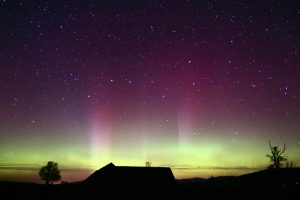 Look up to the Stars
Look up to the Stars
Not only does this remote area have stunning dark skies but it also has easy access allowing everyone to enjoy a night sky brimming with stars. Indeed the high quality of the night skies above Tomintoul and Glenlivet have been awarded the prestigious status of International Dark Sky Park, making it the most northerly Dark Sky Park in the world and among the darkest skies in the UK.
Our dark skies can be enjoyed by everyone, from the experienced astronomer and telescope user, night time photographers or for anyone interested in finding about the night sky.
The best time for star gazing is during the darker months of the year from October to March.
Why not visit the 3 Dark Sky Discovery Sites within the Glenlivet Estate, which provide great views of the night sky. Parking and interpretation can be found at Field of Hope, by Tomintoul, The Carrachs in the Braes of Glenlivet and Blairfindy Moor.
Or come along to a Dark Skies events, with a chance to view the constellations and night sky phenomena through telescopes, and learn about the night sky. Find out more about Dark Skies events.
For astro-photographers, the viewing opportunities are endless. A network of waymarked paths through the Glenlivet Estate will guide you to the many vantage points with big skies and distant horizons.
Dark Skies Project
The Tomintoul and Glenlivet Dark Sky Park not only recognises the exceptionally dark skies of the area, but also the work of volunteers locally who are committed to reducing light pollution.
Through the Dark Skies Project, and the support of the Tomintoul & Glenlivet Landscape Partnership, volunteers are working with farms, distilleries, Moray Council and households to reduce light pollution through promoting environmentally responsible lighting. This will bring many benefits to wildlife, energy consumption and human health as well as preserving the beauty of the night sky.
Walking trails
-
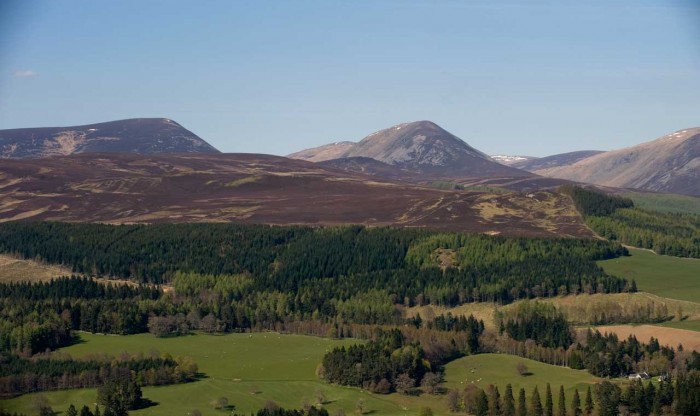
Atholl Community Trails
Join the local historic trail and visit the Wising Well, Witches Rock and the Grotto where Queen Victoria would have tea!
Read More -
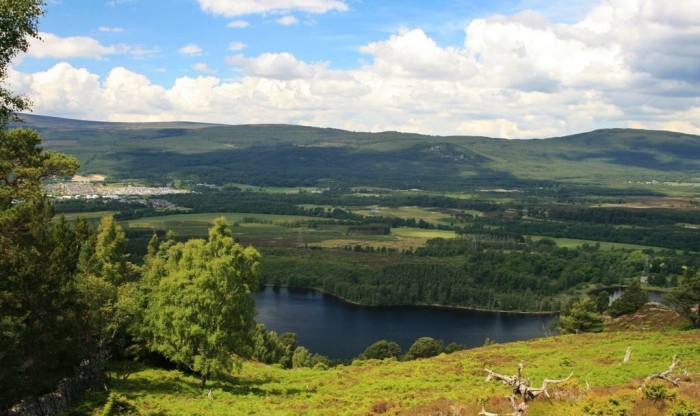
Aviemore Community Paths
Starting in the centre of the village paths lead out of the village with fine views, abundant wildlife and rich local history.
Read More -
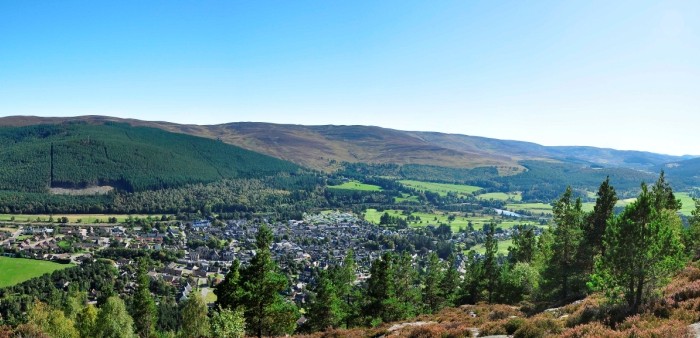
Ballater Community Paths
Famous for it's Royal connections, Ballater's local attractions include Craigendarroch hill, Loch Muick, Lochnagar and more! Enjoy circular walks in and around the village that take in fine views, local history and an abundance of wildlife.
Read More -
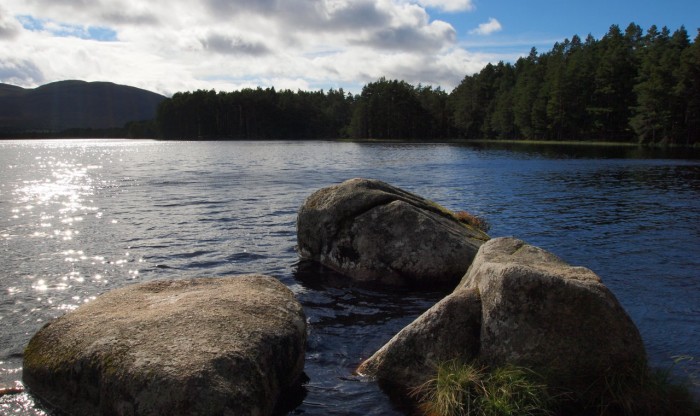
Boat of Garten Community Paths
Explore Boat of Garten, the hub of the Strathspey Railway and the original Osprey village.
Read More -
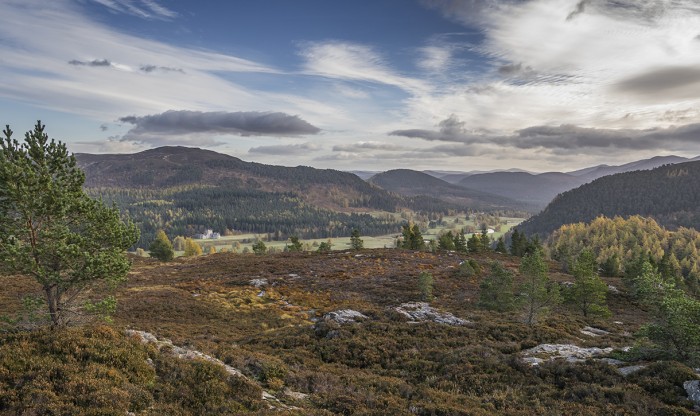
Braemar Community Paths
There’s something for all tastes, from a gentle stroll by the River Dee to a strenuous hike for one of the best views on Deeside.
Read More -
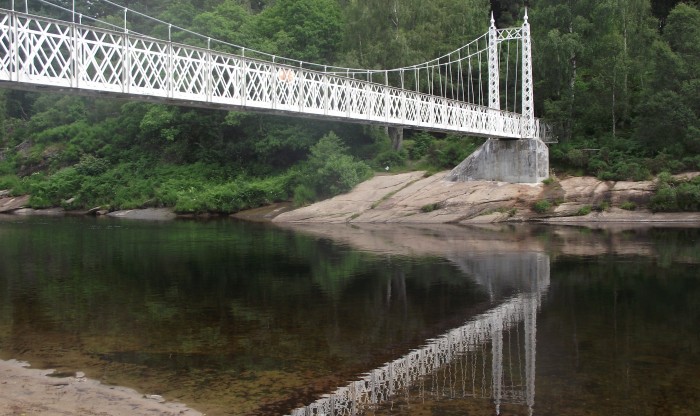
Cambus o'May Trails
Cambus o'May boasts something for everyone. Choose from trails that cross a lochan on a picturesque bridge, or wind through Scots pine trees and listen to squirrels chattering or take in the grand Deeside mountains.
Read More -
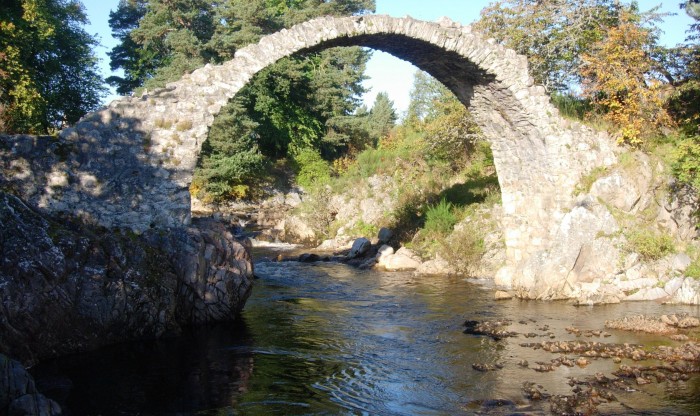
Carr-Bridge Community Paths
Carr-Bridge is most famous for its 18th century packhorse bridge, but is an area perfect nature lovers and perhaps the best place in Scotland to see red squirrels as well as other wildlife.
Read More -
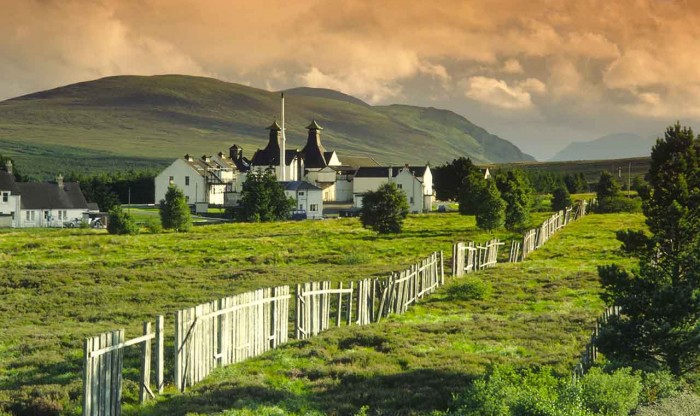
Dalwhinnie Community Trails
Take a walk to the distillery or enjoy the fine views around Loch Ericht.
Read More -
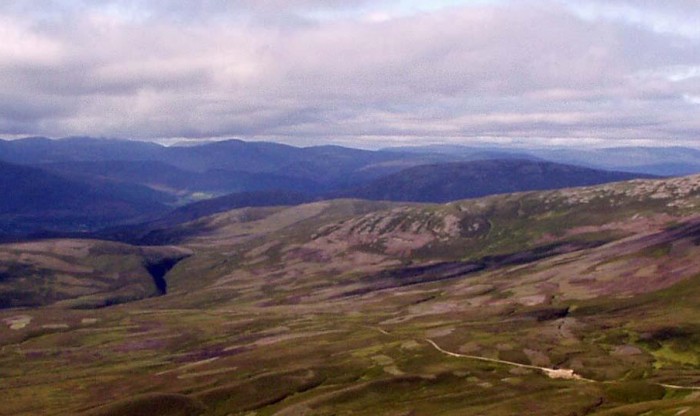
Deeside Way
The Deeside Way is a longer distance path running from near the centre of Aberdeen, oil capital of Europe, to Ballater, in the Cairngorms National Park, famous for it’s Victorian Heritage and links to Balmoral Castle.
Aboyne to Ballater
Read More -

Dulnain Bridge Community Paths
A network of paths and tracks lead out of the village, providing a variety of routes to enjoy with fine views, a rich local history and abundant wildlife.
Read More -
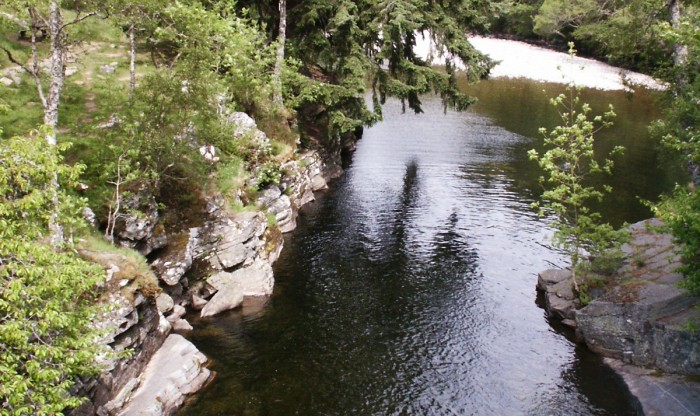
Feshiebridge Trails
Feshiebridge is part of a beautiful, peaceful forest that washes against the great bulk of the Cairngorm mountains and home to red squirrels, pine martens, rare crested tits, crossbills and red deer. With beautiful trails from the wide grassy bank of the River Feshie, offering spectacular views and perfect for a picnic.
Read More -
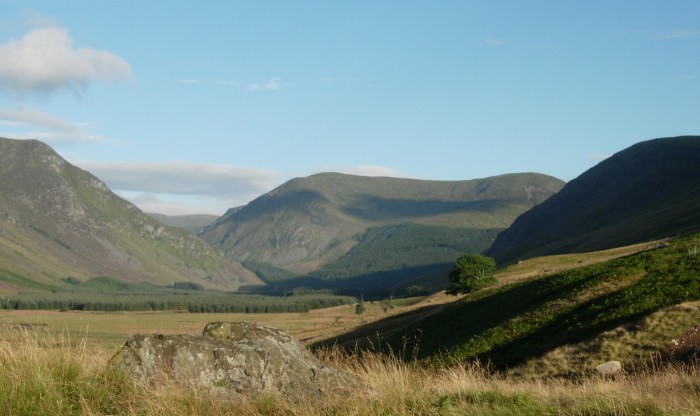
Glen Clova Community Paths
Glen Clova is one of the six Angus glens, offering superb views and an abundance of flora and wildlife from eagles flying overhead, red squirrels in the woodland, to roe deer wandering the hillside.
Read More -
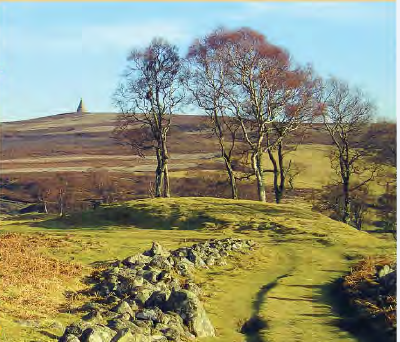
Glen Esk Community Paths
Glen Esk is the longest and most easterly of the Angus Glens with some excellent hiking routes to suit all abilities, including one to Queen's Well and another up Mount Keen, Scotland's most easterly Munro.
Read More -
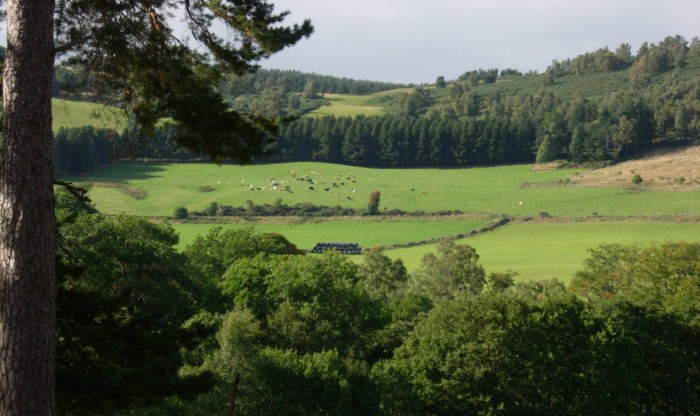
Glen Tanar
A walk in Glen Tanar is good for the soul. From forest tracks along the meandering Water of Tanar, to climbing, single-track trails across heathery moors.
Read More -
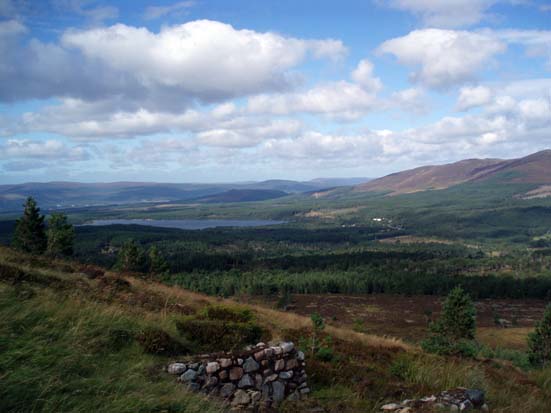
Glenmore Trails
Glenmore Forest Park lies at the heart of the Cairngorms National Park. It’s a great place to see what makes the National Park so special: forests that have been growing for centuries form a green sea around high, rounded mountains, and lochs with sandy beaches glitter in the sun. Rare wildflowers and birds thrive among the trees – much of the forest park is a National Nature Reserve. Best of all, it’s easy to explore, with plenty of things to see and do whatever your mood.
Glenmore, scotland
Read More -
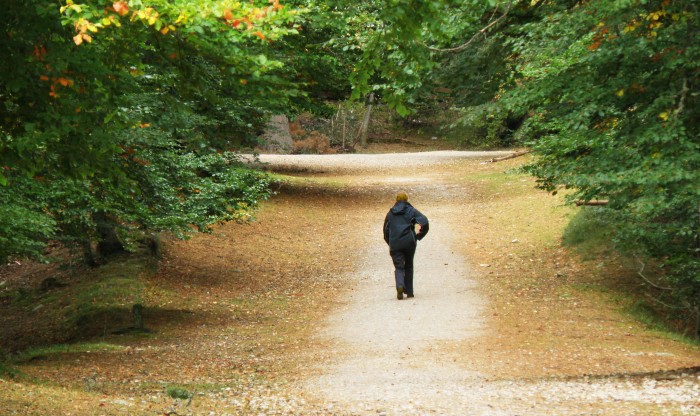
Grantown Community Paths
Grantown is set in magnificent countryside. Leave the car where it is, grab the boots, and get out there! Gentle paths take you through the wild Pine woods of Anagach to the River Spey; rough hill paths lead you through the Hazel and Aspen trees of Beachen Wood; a climb to the Viewpoint gives you the lie of the land as far as the Cairngorms, Cromdale Hills and Ben Rinnes.
Read More -
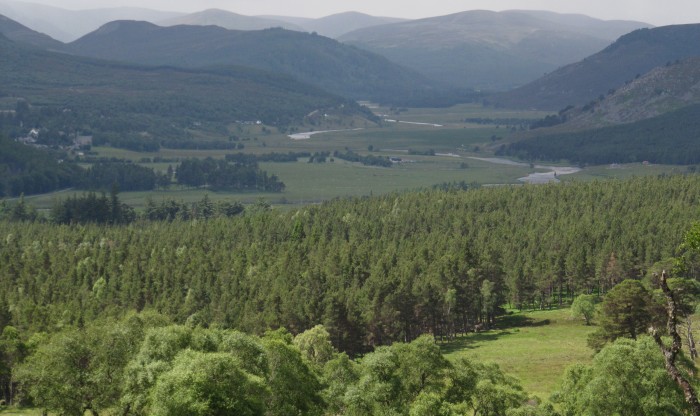
Keiloch Trails
Enjoy several walks on the Invercauld Estate with varying ability levels and distances but all offering amazing views of Deeside. You may even be rewarded with sightings of eagles and buzzards overhead.
Read More -
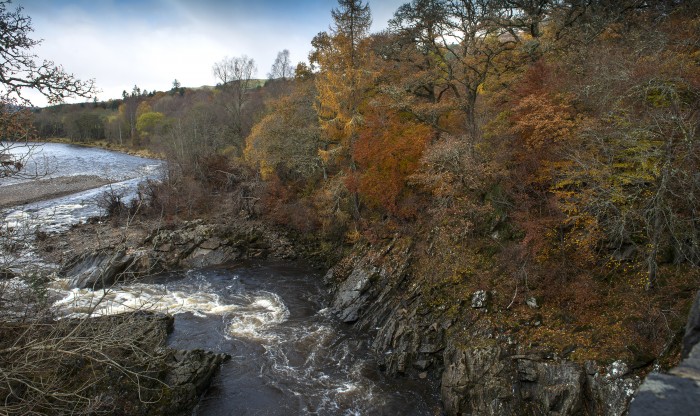
Killiecrankie Trails
Killiecrankie, where the Highlands meet the Lowlands, is home to a variety of wildlife, flora and fauna. Follow the paths to explore the Pass of Killiecrankie and take in the breathtaking views. Discover where the first shots in the Battle of Killiecrankie were fired – one of the goriest battles in Jacobite history.
Read More -
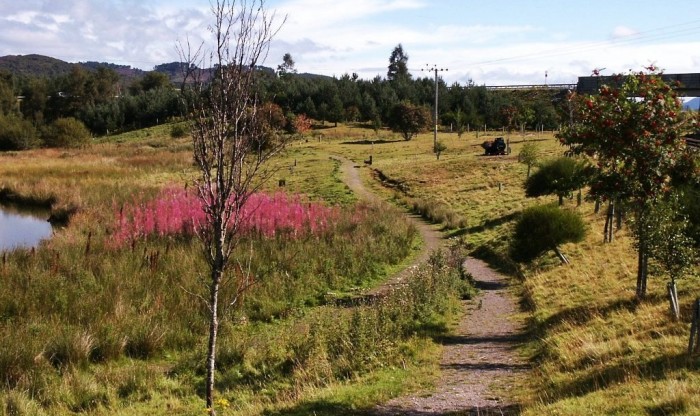
Kingussie Community Paths
A network of paths and tracks leads out of the village, providing a variety of circular routes to enjoy with fine views, a rich local history and abundant wildlife.
Read More -
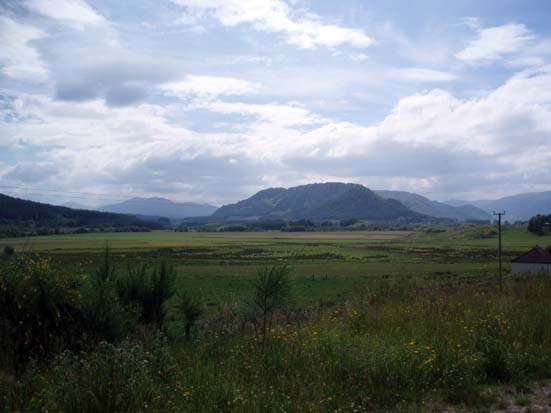
Laggan Community Paths
Discover the spectacular Falls of Pattack, a 2000 year old Iron Age Fort at Dun Da Lamh and walk around Glentruim!
Read More -
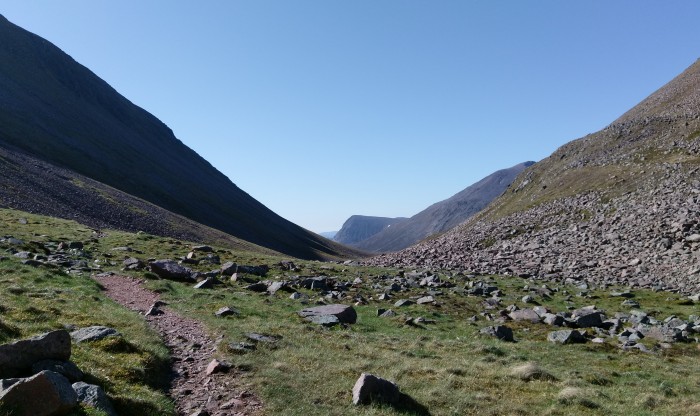
Lairig Ghru
This great pass is the most frequented route across the Cairngorms, going through much grander scenery than the Glen Feshie or Lairig an Laoigh routes. It is a long strenuous walk, requiring 10-12 hours, on a well trodden, but in places very rough path marked by cairns on its higher reaches.
Read More -
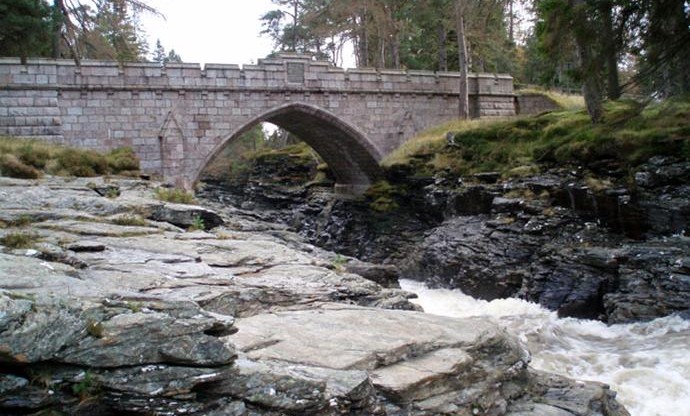
Linn of Dee Trails
Mar Lodge Estate is a paradise for wildlife and history enthusiasts, explore the area’s Mesolithic remnants and post-medieval townships. From the Linn of Dee car park there are a number of low-level walks to be enjoyed where you can take in the views of the rushing falls.
Read More -

Loch Garten Trails
Loch Garten has some excellent walks around the ancient Caledonian pine forest. It is renowned for its breeding population of ospreys as well as playing host to red squirrels, dragonflies and crested tits. Early in spring, you may be lucky enough to see the spectacular display of the capercaillie.
Read More -
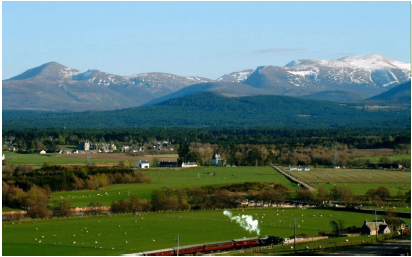
Nethy Bridge Community Paths
A network of way-marked paths, including an all-abilities trail, provides a great opportunity to discover more about the Abernethy area.
Explore Abernethy
Read More -
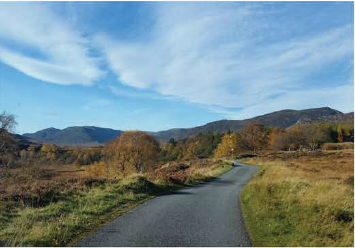
Newtonmore Community Paths
Newtonmore also known as the "Walking Centre of Scotland", referring to its close proximity to what is said to be the original Geographical Centre of Scotland. Lying at the southern end of the Spey Valley, the village offers a wide range of great walking opportunities, like the Wildcat Trail and the Speyside Way.
Read More -

Rothiemurchus Estate
Rothiemurchus has a 50km network of carefully maintained paths which take you through beautiful forest, around stunning lochs and to the foot of vast mountains.
Read More -

Speyside Way
Aviemore to Buckie
Read More -

Strathdon Community Trails
Strathdon is an area rich in scenic beauty and steeped in history. Discover Corgarff and Glenbuchat Castles and explore the Doune of Invernochty or visit the renowned annual Lonach Gathering.
Read More -
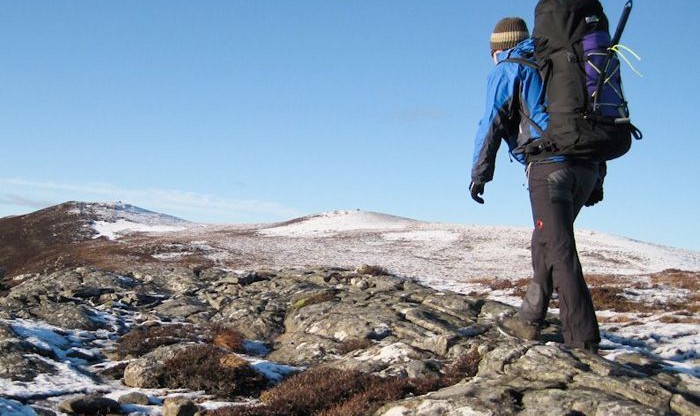
The Ladder Road
Torrancroy, N of Strathdon
Read More -

Tomintoul Community Trails
Explore a network of paths in and around the highest village in the Highlands.
Read More
Outdoor Activities
-

Cairngorm Mountain
Ski and snowboard station with a funicular railway, lifts and equipment hire
Cairngorm Ski Area, Aviemore, Inverness-Shire PH22 1RB
Read More -
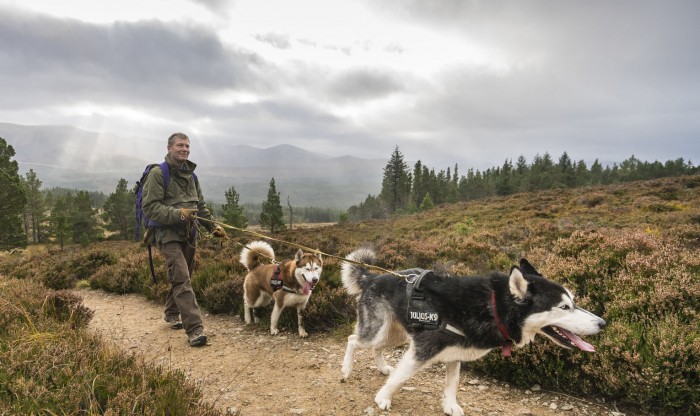
Cairngorm Sleddog Centre
Situated in Aviemore, at the foot of the Cairngorm Mountain Range, The Cairngorm Sleddog Centre offers a wide range of activities for the whole family.
Read More -

Glenshee Ski Centre
Extensive skiing and snowboarding facilities
Cairnwell, Braemar, Aberdeenshire AB35 5XU
Read More -

Killiecrankie Bungee Jumping
Bungee jumping from the perfectly sound structure that is the bridge over the River Garry, plummeting head long to the shallow waters below.
Read More -

Loch Insh Watersports Centre
Cozy B&B Bunkhouse & log chalets with hot tubs on the shores of Loch Insh in the Cairngorms’ National park.
Our waterborne activities include Sailing, Windsurfing, Stand-Up-Paddle Boarding (SUP) Canoeing, Kayaking, Raft Building, Rowing, Pedalo’s, Osprey Boat Trip and Spey Salmon Fishing.
If your prefer to remain dry, you can enjoy Archery, Mountain Biking, Skiing & Snowboard hire on our dry ski slope, Orienteering, and Play Parks, Team Building, and stunning Wildlife Walks through the adjacent forest.
Kincraig, Kingussie
Read More -
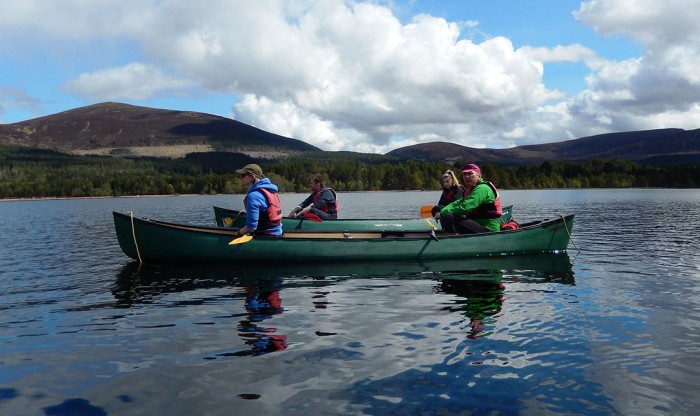
Loch Morlich Watersports Centre
Only 10 minutes from the centre of Aviemore, in the heart of the Cairngorms National Park, Loch Morlich is less than 4 miles from Cairngorm Mountain. Loch Morlich and Glenmore Forest Park offers something for everyone.
Aviemore
Read More -

Pitlochry Boating Station
Pitlochry Boating Station is set on the picturesque shores of Loch Faskally and offers some of the best fishing in Pitlochry.
Loch Faskally
Read More
Bike trails
-

Anagach Woods Trails
A great little area with something for everyone
Read More -

Carr-Bridge Bike Park
A community led initiative to let kids have fun on their bikes
Read More -

The Lecht Mountain Bike tracks
Fantastic runs from beginning to advanced
Read More -

Glenlivet bike trails
-

Laggan Wolftrax
Fantastic runs from beginning to advanced
Over 20 miles (35 km) of purpose-built trails wind through Laggan Forest, with superb views of the Monadhliath hills on the edge of the Cairngorms National Park.
Read More
Scenic spots
-
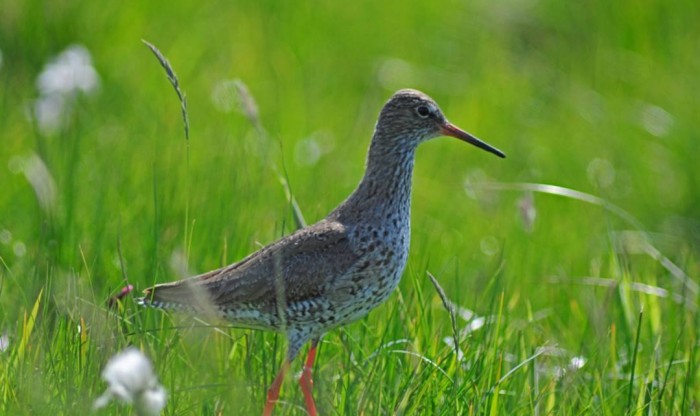
Bird Hide
Insh Marshes
Read More -

Camera Obscura
Particularly scenic spot
Cairngorm Mountain
Read More -
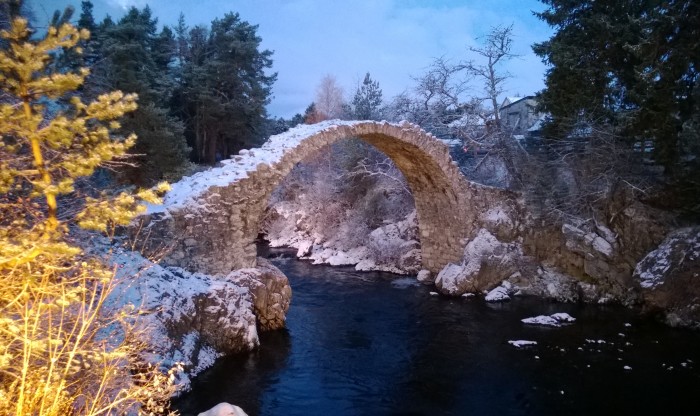
Carr-Bridge Pack Horse Bridge
-

Farleitter Crag and Uath Lochans
-

Loch Morlich
Despite being a freshwater loch and 300 metres above sea level it is the highest beach to be given the Seaside Award by Keep Scotland Beautiful.
Read More -
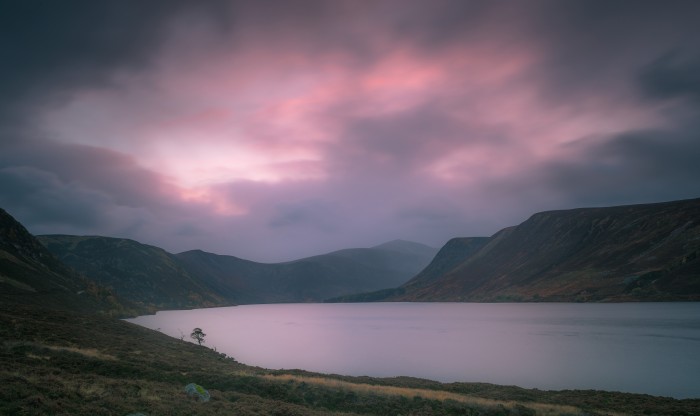
Loch Muick
-
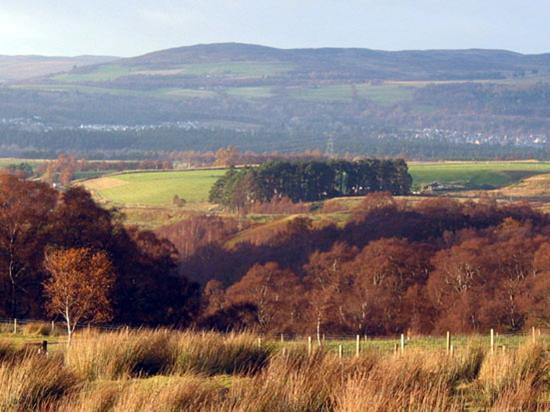
Queen's View, Loch Tummel
Near Pitlochry
Read More -

Ruthven Barracks
Ruthven Barracks were built by George II’s government in the early 1700s after the failed Jacobite uprising of 1715. The troops stationed there were to maintain law and order and enforce the Disarming Act of 1716.
Read More -

Stargazing: Blairfindy Moor Dark Sky Discovery Site
Stargazing in the Cairngorms.
The Glenlivet and Tomintoul area is one of the best places in the Cairngorms National Park to discover the wonders of the night sky, indeed the high quality of the night skies above Tomintoul and Glenlivet have been awarded the prestigious status of International Dark Sky Park, making it the most northerly Dark Sky Park in the world and among the darkest skies in the UK! Visit a Dark Sky Discovery Sites within the Glenlivet Estate. Parking and interpretation can be found at Field of Hope, by Tomintoul, The Carrachs in the Braes of Glenlivet and Blairfindy Moor.
Dark Sky Discovery Site: Blairfindy Moor
Read More -
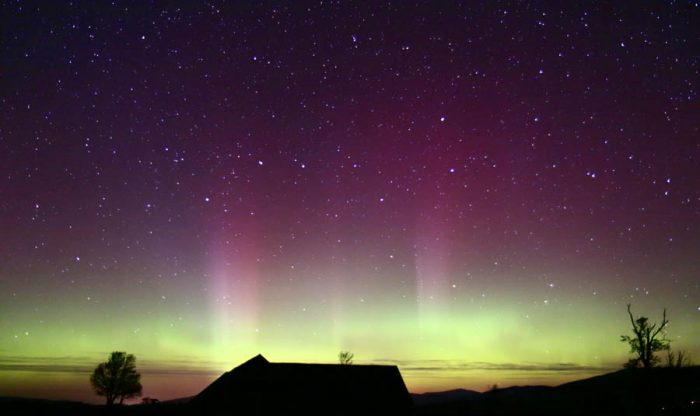
Stargazing: Carrachs Dark Sky Discovery Site
Stargazing in the Cairngorms.
The Glenlivet and Tomintoul area is one of the best places in the Cairngorms National Park to discover the wonders of the night sky, indeed the high quality of the night skies above Tomintoul and Glenlivet have been awarded the prestigious status of International Dark Sky Park, making it the most northerly Dark Sky Park in the world and among the darkest skies in the UK! Visit a Dark Sky Discovery Sites within the Glenlivet Estate. Parking and interpretation can be found at Field of Hope, by Tomintoul, The Carrachs in the Braes of Glenlivet and Blairfindy Moor.
Dark Sky Discovery Site: The Carrachs in the Braes of Glenlivet
Read More -

Stargazing: Field of Hope Dark Sky Discovery Site
Stargazing in the Cairngorms.
The Glenlivet and Tomintoul area is one of the best places in the Cairngorms National Park to discover the wonders of the night sky, indeed the high quality of the night skies above Tomintoul and Glenlivet have been awarded the prestigious status of International Dark Sky Park, making it the most northerly Dark Sky Park in the world and among the darkest skies in the UK! Visit a Dark Sky Discovery Sites within the Glenlivet Estate. Parking and interpretation can be found at Field of Hope, by Tomintoul, The Carrachs in the Braes of Glenlivet and Blairfindy Moor.
Dark Sky Discovery Site: Field of Hope Tomintoul
Read More -
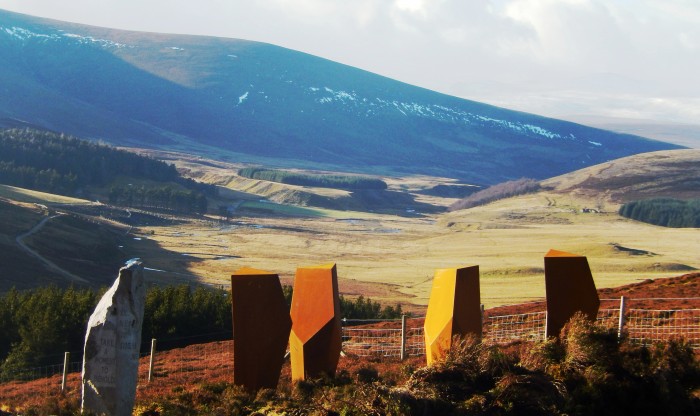
The Watchers, Corgarff
Built as part of the innovative Scenic Routes initiative, the Coulls at Corgarff offer respite and to take in the wonderful views.
A939 - 3km south of the Lecht Ski Area
Read More
Castles & Culture
-

Blair Castle
-

Blairfindy Castle
Built by the Earl of Huntly in 1564, this dramatic stronghold was most likely used as a hunting lodge.
Read More -

Braemar Castle
17th Century Castle with an exciting story.
Read More -

Castle Roy
Castle Roy is an 11th century fortress built by the Clan Comyn on a small glacial mound to the north of the modern village of Nethy Bridge.
Read More -
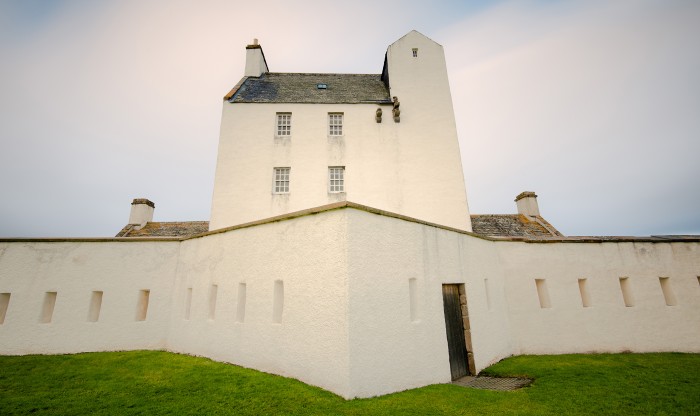
Corgarff Castle
Originally a noble residence, Corgarff became an army base for hunting down Jacobite sympathisers and, later, whisky smugglers.
Read More -

Drumin Castle
Only two walls remain of this former stronghold of Alexander Stewart, better known as the 'Wolf of Badenoch' (1342-1406).
Read More -

Frank Bruce Sculpture Park
Feshiebridge is part of a beautiful, peaceful forest that washes against the great bulk of the Cairngorm mountains. There are beautiful trails along the wide grassy bank of the River Feshie, perfect for a picnic, and some intriguing sculptures to discover among the trees.
Feshiebridge
Read More -
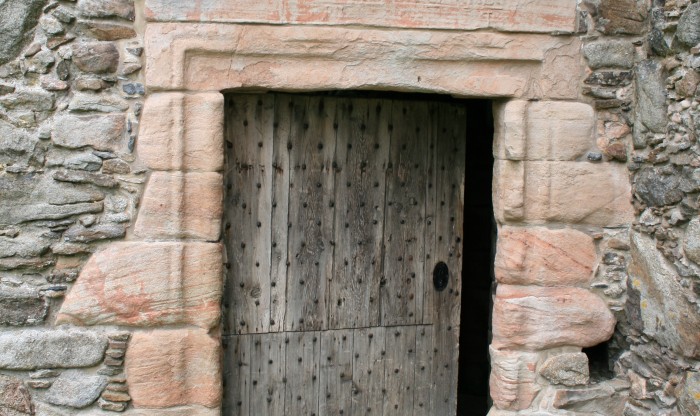
Glenbuchat Castle
Admire a picturesque late-medieval tower house overlooking farmland and the Bridge of Buchat.
Read More -

Kincardine Church
Although plain and simple, Kincardine is of considerable historic interest. Like Alvie and Insh it was probably founded in or around the 7th Century by Celtic missionaries from Iona. The foundations of the existing building are 12th Century and the Lepers Squint in the walls indicates that the walls themselves were built prior to the Reformation.
Read More -

Lecht Mine
Set in the hills at the foot of the Lecht, the iron mine has a rich and interesting history.
Read More -

Loch an Eilein Castle
Loch an Eilein (loch of the island) with it's 13th century island castle was voted 'UK's best picnic spot', easy walks through ancient forest round the loch with views of the island castle and mountains. Visitor centre, loos, attended car park open every day.
Read More -

Ruthven Barracks
-
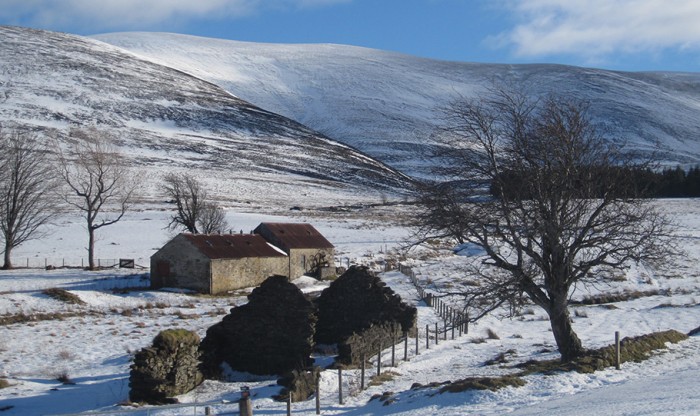
Scalan
Hidden deep in the Braes of Glenlivet the Scalan seminary is arguably one of the most significant sites of historical interest in the area.
Read More
Nature Reserves
-

Abernethy
Home to some of Scotland's most spectacular wildlife, Abernethy is a dramatic and awe-inspiring place. A fragile mosaic of ancient Caledonian pinewood, moorland, bog and mountain plateau, this reserve really has something for everyone. Look out for some of the pinewood residents, like the fast moving red squirrel or the restless flitting of a yellow siskin. Or head for Loch Garten and watch its most famous summer visitors, the imposing ospreys nesting high in the tree tops.
National Nature Reserve
Read More -

Corrie Fee National Nature Reserve
Corrie Fee NNR is managed by SNH. Visit their website to find out more.
Corrie Fee
Read More -

Craigellachie
Walking, birdwatching and enjoying the stunning views of the Cairngorms are the main activities here and a network of paths cross the reserve. Take your pick of one of the four routes, one of which is all abilities, and enjoy the unexpected peace and solitude to be found here just minutes from the main road and the local village.
National Nature Reserve
Read More -

Glen Tanar
Glen Tanar provides a great opportunity to explore Scotland's classic Caledonian pine forest in search of its elusive wildlife.
National Nature Reserve
Read More -

Glenmore
A haven for wildlife and outdoor enthusiasts alike, it's no surprise that Glenmore translates from the Gaelic as the 'big glen'. You can choose to seek out some of the small but beautiful plants living on the forest floor or just savour the fragrant carpet of needles beneath the ancient granny pines. Woodland specialists like red squirrels, crossbills and crested tit can all be found and the forest is often alive with the sound of bird song.
National Nature Reserve
Read More -

Insh Marshes
RSPB Insh Marshes National Nature Reserve is one of the most important wetlands in Europe. Enjoy a springtime stroll along our nature trails and look out for nesting lapwings, redshanks and curlews. Or visit in the wintertime when the marsh floods to provide the ideal habitat for visiting flocks of whooper swans and greylag geese.
National Nature Reserve
Read More -
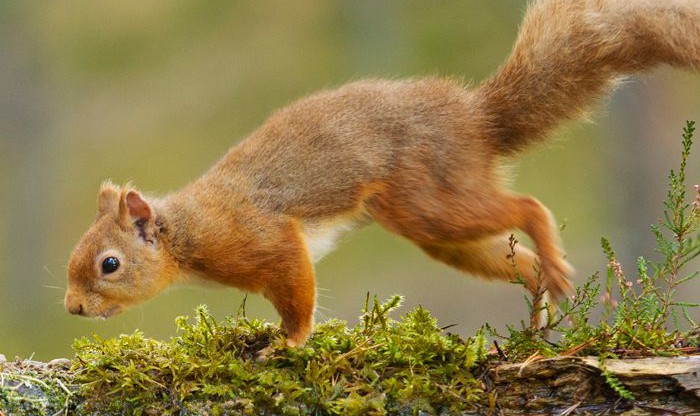
Invereshie and Inshriach
Perched on the edge of the Cairngorm plateau, twisted and gnarled pines mark your passage from peaceful pinewood to exposed mountain as you explore this reserve.
National Nature Reserve
Read More -

Mar Lodge Estate National Nature Reserve
Mar Lodge Estate NNR is managed by the National Trust for Scotland. Visit their website to find our more.
Mar Lodge
Read More -
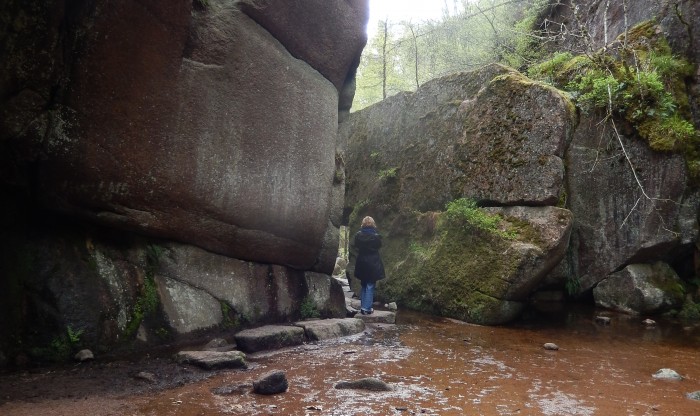
Muir of Dinnet
Muir of Dinnet blends woodland, heath, open water and an impressive example of nature's sculptural work, all on one site. Visit the Burn O'Vat and feel the rock walls swallow you up in their damp embrace, cutting you off from the outside world. Elsewhere, wander through birch woodlands, watch for the flash of a damselfly's wings or savour the peace and tranquillity of a summer reflection in the clear water of the lochs.
National Nature Reserve
Read More -

RSPB Insh Marshes National Nature Reserve
What you can expect to see here and when: Curlew (spring), Lapwing (spring/summer), Red shank (spring), Snipe Whooper swan (Oct – April)
Kingussie
Read More
Family Attractions
-

Cairngorm Mountain
Highest funicular railway and snow sport centre
Read More -

Funhouse, Colyumbridge Hotel
Discover a world of excitement for all the family at the Fun House, with mini-golf, soft play and a video arcade
Read More -
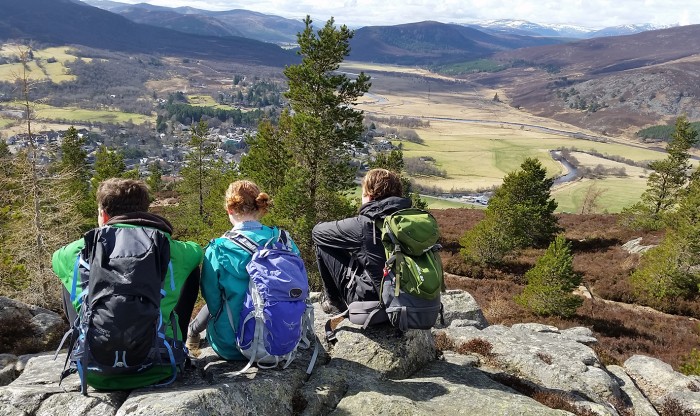
Geocaching
The Explore Royal Deeside GeoTour has been set up along the Deeside Way from Drumoak to Ballater, continuing up to Braemar. To add to your enjoyment, there are also a number of mini-trails leading you into some of Deeside’s historic landmarks, local estates, iconic villages, forestry trails and lochside walks – some 70 new caches in total have been hidden throughout the valley with more in the pipeline. All the caches are freely available – happy hunting!
For those of you keen to add to the adventure, we are running an Explore Royal Deeside passport alongside the Geotour. A specially commissioned trackable Geocoin has been set up as a bonus to those who stay, eat, have fun or shop with participating businesses
Royal Deeside
Read More -
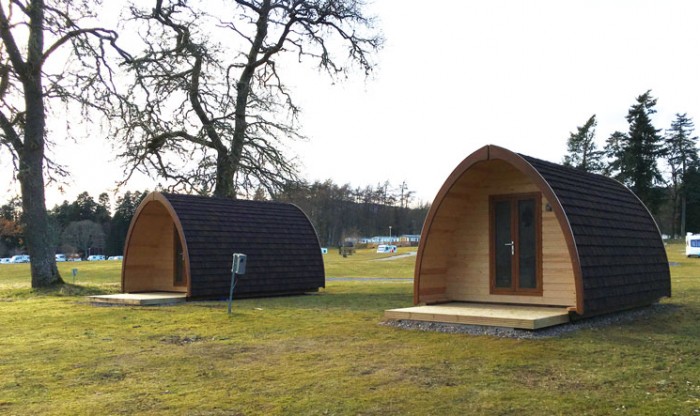
Glamping
Blair Castle Caravan Park has two new camping pods, suitable for up to 4 people. With electric lighting and heating, the pods provide a gentle introduction to camping, whatever the weather.
Blair Atholl Caravan Park
Read More -

Grantown Museum
Learning and enjoyment for all including a new children's exhibition
Read More -

Highland Folk Museum
An open air museum giving a flavour of how Highland people lived and worked from the 1700s up until the 1960s
Read More -

Highland Wildlife Park
-

Landmark Forest Adventure Park
An adventure park and nature trail
Read More -

Nethy Bridge Visitor Centre and Ranger Base
Visitor Information and orientation (local to Park-wide) including info on paths, Dell Woods National Nature Reserve and Cairngorms National Park Exhibits / displays, hands on children’s activities, touch table, historical maps and photographs, historical information and artefacts, walks packs, trail maps for sale.
and … toilets!!!
Read More -

Rothiemurchus Estate
Outdoor Activities Centre
Read More -
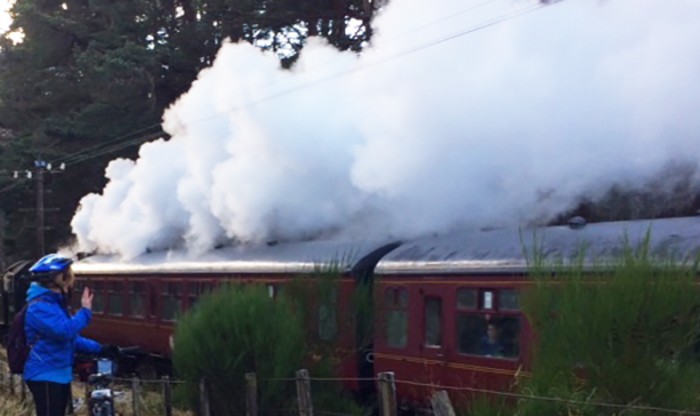
Strathspey Railway
Nostalgic steam train trips from the village of Aviemore in the National Park.
Read More -

Wildcat Centre
Walk the Wildcat Trail through our spectacular countryside and hunt for 132 painted model wildcats.
Call 01540 673131 for more information.
Main Street, Newtonmore
Read More -

Zip Wire, Alvie
Fly through the trees on an exhilarating ride through the trees on Uk’s first Zip Trek Adventure Park based on Alvie Estate near Aviemore!
Read More
Visitor Information
-

Aviemore VisitScotland iCentre
Aviemore iCentre is located in the centre of the village only 200 yards from the rail station and bus stop - a great place to start exploring the Cairngorm National Park.
Offering detailed walking, hiking, climbing and cycling information, tours and transport reservations. An accommodation booking service throughout Scotland is also provided by the professional and friendly staff who want to share their knowledge and enthusiasm for their area.
Grampian Road, Aviemore T: 01479 810930
Aviemore
Read More -

Ballater VisitScotland iCentre
Ballater iCentre is located within the Old Royal Station, Station Square in the heart of Ballater. This beautiful and historic building houses the iCentre, Aberdeenshire Council Library and The Carriage Tearoom and Bistro.
Our friendly experts in Ballater can help you make the most out of your visit to Royal Deeside with their wealth of local knowledge and ideas for things to see and do. We can help you find the perfect accommodation, whether it be in the local area or anywhere in Scotland. We provide a range of services, and can book tickets for travel and transport (including Caledonian MacBrayne Ferries if the Islands are on your itinerary of destinations), and more locally annual parking permits for the Glenmuick Estate.
Station Square, Royal Deeside, Ballater T: 013397 55306
Ballater
Read More -

Blair Atholl Information Centre
This Information Centre is generally unmanned. Opening hours 9am to 4.45pm, between Easter and October.
Main Road, Blair Atholl
Blair Atholl
Read More -

Crathie Information Centre
Friendly staff will help you with any enquiries you may have about the area and Scotland in general.
Opening Times:
10am to 5pm, 7 days a week, April-8th September
10am to 4pm, 7 days a week, 9th September-end of October
10am to 12pm, Mon-Fri, November-March (with the exception of public holidays)
The Car Park, Royal Deeside, Crathie T: 013397 42414
Ballater
Read More -

Dulnain Bridge Information Centre
Based at the Speyside Centre, a family run business established since 1972.
Opening Times:
SUMMER - 9am - 5.30pm Monday to Saturday, 10am - 5pm Sunday
WINTER - 10am - 4pm Monday to Saturday, 10am - 4pm Sunday
Hours can vary during January and February due to weather conditions - please phone to confirm.
Skye of Curr, Dulnain Bridge, Inverness-shire T: 01479 851359
Dulnain Bridge
Read More -
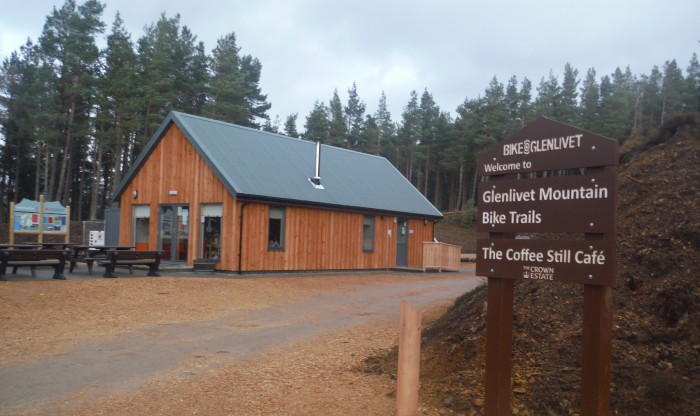
Glenlivet Bike Trails Cafe
As well providing homemade breakfasts and lunches to hungry bikers, the cafe is a Local Information Centre for the Cairngorms National Park.
Glenlivet
Read More -

Glenshee Information Centre
Based in the Wee House of Glenshee the Visitor Centre has a wide range of useful information including information panels on the history and heritage of the area, myths and legends of the Glen.
There is a large stock of free information including our walking and mountain biking guide to the area, local accommodation providers and activity operators.
Open Daily 10am to 5pm, Easter-December, February half-terms and some weekends during the Ski Season.
Tel: 01250 882238 to check opening times outwith normal times.
A93, 12 miles north of Blairgowrie
Blairgowrie
Read More -

Grantown-on-Spey Information Centre
Based at the Grantown Museum our visitor information service can guide you in making your stay the best possible experience.
Opening Times: 10am to 5pm Mon–Sat, April–October
Grantown Museum, Grantown-on-Spey T: 01479 872478
Grantown-on-Spey
Read More -

Kingussie Information Centre
Based at Caberfeidh Horizons Bookshop, a first class second hand bookshop working to serve the community.
Opening Times: 10am - 4.30pm Monday to Saturday, Sunday Closed
16 High Street, Kingussie PH21 1HR Tel: 01540 661000
Kingussie
Read More -

Laggan Information Centre - Laggan Stores Coffee Bothy and Gallery
Based at Laggan Stores Coffee Bothy and Gallery, where you will get a warm welcome and plenty of local information. A great place to stop and re-charge your batteries.
Opening Times:
Our Summer Opening Times (1 April to 31 October) are as follows..
8am - 5pm Monday, Tuesday, Thursday, Friday
Wednesday – Closed all day
9am - 5pm Saturday, 9.30 - 5pm Sunday
Occasionally opening (and closing) times may vary. Any changes will be posted on our Facebook Page - https://www.facebook.com/lagganstores
Laggan, Inverness-shire Tel: 01528 544737
Laggan
Read More -

Laggan Information Centre - Laggan Wolftrax
Based at Laggan Wolftrax, boasting a bright and airy café with comfortable sofas with lovely views and helpful, friendly staff to help make your trip as enjoyable as possible.
Opening Times:
Office 10am - 4pm Mon to Fri.
Café 10am - 4pm Wednesday to Sunday (Closed Monday and Tuesday)
Strathmashie, Laggan, Newtonmore Tel: 01528 544366
Laggan
Read More -

Nethy Bridge Information Centre
Based at Nethy Bridge Community Centre which is unmanned, however, you may get to meet the Community Ranger who calls in on a frequent basis.
The centre is a great introduction to the area and you will find a range of visitor information both local and Park-wide.
Opening Times:
9.30am – 5pm Daily throughout the year (weather permitting)
Dell Road, Nethy Bridge, Inverness-shire
Nethy Bridge
Read More -

Tomintoul & Glenlivet Discovery Centre
Our staff and volunteers have in depth knowledge of the area and can advise you the best places to visit and things to see to make your visit truly unique.
We also have free wifi, tea and coffee and souvenirs and maps and guides.
Opening Times:
10am to 5pm, 7 days a week, April-October
The Square, Tomintoul T: 01807 580760
Tomintoul
Read More
Ranger Bases
-

Angus Glens Ranger Service
Located at the Glen Doll Ranger Base, the Angus Glens Ranger Service has an operational area that takes in all of the local glens. The Rangers are on hand to offer advice on walks, wildlife, hill conditions, stalking activities and a variety of other topics. The base has a visitor centre offering information displays and a wide range of Cairngorms National Park leaflets, including walks in Glen Clove and Glen Doll, Glen Esk and cycling in the Angus Glens. There are several waymarked woodland trails through Glen Doll Forest. The Rangers run a series of events throughout the year and guided walks for visiting groups and schools can be arranged.
Tel: 01575 550233
Kirriemuir
Read More -

Atholl Estates Ranger Service
Atholl Estates dates back to the 13th century and today manages a range of operations in the tourism, events, forestry, farming, property and country sport sectors. Based in Blair Atholl, the Atholl Estates Ranger Service assists visitors in their understanding and enjoyment of the area, and also plays a role in countryside education and conservation. They manage waymarked trails for walkers and cyclists on the estate, as well as running the Information Centre, which features a display on the workings of the estate and offers some activities for children. Information on what to do in the area is provided, making the Centre a helpful reference point if you are planning any outdoor activities. The centre is open from 9am to 4:45pm daily, between Easter and October
Tel: 01796 481 355/481 646
Blair Atholl
Read More -

Balmoral Estate Ranger Service - Glen Muick
Balmoral Estate is a highland estate with a long association with Royalty. Queen Victoria bought the estate in 1852 and since then it has provided a home for successive generations of the Royal Family. The Visitor Centre at the Spittal of Glen Muick includes interpretation of the surrounding area and is open year round, with free entrance. The Ranger Service provides guided walks, talks and land rover safaris to the general public, as well as providing talks and information for educational groups. They aim to give visiting groups an opportunity to enjoy, explore and appreciate the landscape and wildlife found on a traditionally managed, privately owned Highland Estate. A Ranger tries to be available every day in the early morning and late afternoon, in the visitor centre. Up-to-date weather forecasts are displayed during the winter months. Wildlife information and leaflets, describing walks in the local area, can also be obtained from the visitor centre.
Tel: 013397 55059
Ballater
Read More -

Cairngorm Mountain Ranger Service
Cairngorm Mountain Ranger Service operating from the Ranger Base at the car park in Coire Cas, at the Cairngorm Ski Area. The Ranger Service organises and carries out work on the mountain paths radiating from the car park and leads guided walks to the summit of Cairn Gorm in summer. A large part of the annual environmental monitoring in relation to the mountain railway is done by the ranger. Among other activities are counts of winter climbers, organisation of volunteers and educational visits from schools and colleges. The rangers also operate the unique Cairngorm Snow White facility to help mountaineers leave no trace on the mountains
Tel: 01479 861327
Cairngorm Mountain
Read More -

Glen Tanar Ranger Service
Glen Tanar Estate is a highland estate specialising in forestry, farming and field sports. The estate runs from Mount Keen in the south to the river Dee in the north and is dominated by its internationally important Caledonian forest remnant. There is a Visitor Centre at Braeloine, with free entrance, which includes a permanent exhibition explaining the history, management and wildlife of the estate. The Centre is manned by a full-time countryside ranger service which provides help with outdoor education and environmental activities. They offer advice which can help you make the most of exploring the area and we are happy to provide you with information on the local wildlife. Visits by educational groups are always welcome.
Tel: 013398 86072
Aboyne
Read More -

Glenlivet Estate Ranger Service
Glenlivet Estate is part of Crown Estate Scotland and lies between the Ladder and Cromdale hills at the north east edge of the Cairngorms. Within this varied landscape you can enjoy excellent walking, cycling, horse riding, skiing and wildlife watching on the extensive network of waymarked trails. The Ranger Service operates an Information Centre in Tomintoul (free entry), where a variety of displays and leaflets are available and staff are on hand to offer advice. A woodland adventure playground is located next to the Information Centre. Guided walks and events are run throughout the year.
Tel: 01479 870070
Tomintoul
Read More -

Glenmore Ranger Service
Forestry and Land Scotland is responsible for the management of forests and woodland owned by the nation. They are the biggest recreation provider in Britain and are working to improve the woods for people and wildlife. Our local ranger team covers Glenmore Forest Park, as well as nearby Inshriach and Strathmashie forests, promoting responsible behaviour and providing information to visitors year-round. Walks, talks and school visits can be arranged by request.
Tel: 01479 861711
Glenmore
Read More -

National Nature Reserve Ranger Service - Muir of Dinnet
Muir of Dinnet National Nature Reserve (NNR) is a mosaic of wetlands, woods and moors. It’s a great place for wildlife and has a wealth of connections to Scotland’s past.
Although the last glaciers melted more than 10,000 years ago, the marks they gouged in the landscape survive today. One of these is the Vat Gorge, where the Burn O’Vat still flows. The Vat itself is a cauldron-shaped pothole, gouged out by rocks tumbling along in a stream beneath a glacier.
Today you can make your way into the Vat through a narrow crack in the rock. Stand in this atmospheric cavern, and listen to the strange echoes of water that seems to pour out of the rocks.
You can also stroll through the woodland, looking out for birds, animals and delicate woodland wild flowers. You may also spot breeding and wintering birds on Loch Kinord.
The visitor centre at the Burn O’Vat explores the natural and cultural heritage of the reserve. From here there are lovely walks through the woodland and around Loch Kinord. Or take the path to the Burn O’Vat and on to a viewpoint with sweeping views across Loch Kinord and beyond.
Tel: 01339 881667
Dinnet
Read More -

RSPB Community Ranger Service
Based in Boat of Garten and the Explore Abernethy Centre the RSPB Community Ranger Service can help you make the most of Abernethy National Nature Reserve and the surrounding woodland. The service runs regular walks and talks as well as promoting responsible behaviour during the sensitive bird breeding season.
Tel: 07771 704440
Nethybridge
Read More -

Rothiemurchus Estate Ranger Service
Rothiemurchus Estate is in the heart of the Cairngorms National Park, near Aviemore, and extends from the River Spey, through one of the largest remaining areas of ancient Caledonian forests, to the tops of the Cairngorms. It is in the ownership and care of the Grants of Rothiemurchus and has the longest established private sector ranger service in Scotland. They are on-hand, 364 days of the year to help visitors enjoy Rothiemurchus, through a wide range of activities and broad in-depth knowledge of the area. They offer advice on where to visit on the estate and what to keep a look out for at different times of the year. There is a ranger base at Inverdruie.
Tel: 01479 812345
Aviemore
Read More -

The National Trust for Scotland Ranger Service – Killiecrankie
The National Trust for Scotland is a conservation charity that protects and promotes Scotland’s natural and cultural heritage for present and future generations to enjoy.
The Pass of Killiecrankie is a magnificent wooded gorge with the River Garry flowing along its base. The Battle of Killiecrankie, which was the major event in the first of the Jacobite uprisings, was fought nearby. The Visitor Centre, which includes a shop, tells the story of both the rich natural history of the Pass and the story of the battle.
Tel: 01350 728641
Killiecrankie
Read More